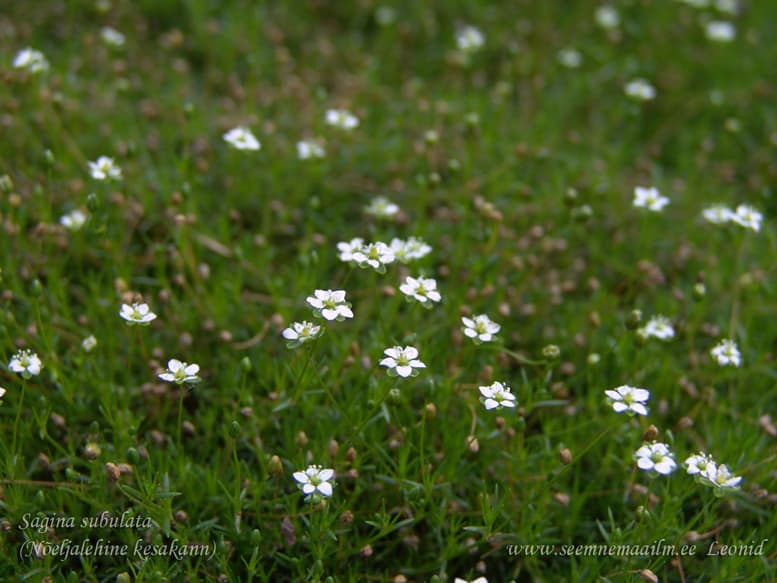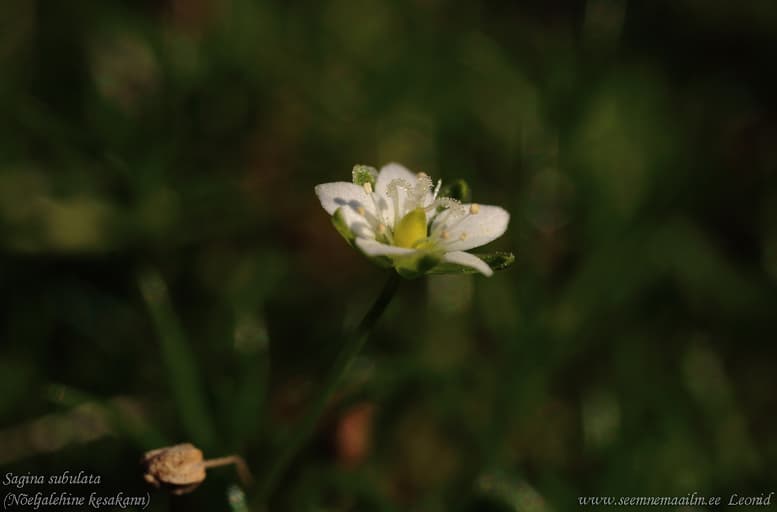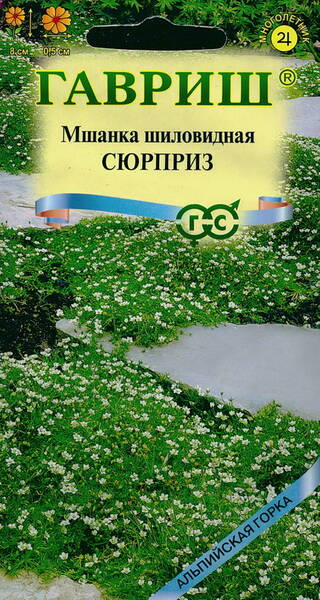A perennial plant that forms dense, small, evergreen cushions about 8 cm high, resembling green moss.
Sagina has branched, creeping stems covered with small leaves. It blooms profusely in July-September with white flowers up to 0.5 cm in diameter.
It grows well in sunny places with loamy soil. It is winter-hardy (Z4-Z9), but in snowless winters it can freeze.
Seeds are sown in boxes with light soil in May, and the grown plants are planted in a permanent place in June, at a distance of 5 cm.
It looks advantageous on rocky areas and in carpet compositions. It is exceptionally good for planting on terraces of rocky gardens of all types and between slabs of paths. Indispensable when creating mountain landscape compositions. It is the best imitation of moss thickets in "Japanese gardens".

* In nature, it grows in illuminated rocky and sandy places, mainly in Ireland.
The leaves of this plant are very small, have the appearance of needles, but soft. Due to this, the plant evaporates little moisture and easily tolerates drought and cold.
Sagina forms numerous shoots that take root easily. Due to this, it quickly forms a dense, uniform, carpet-type covering. If you regularly walk on the plants, the covering becomes denser and takes on the appearance of a dense carpet. If it is trampled little, then the Sagina grows in mounds.
It blooms with small white flowers with 5 petals. The stems are flexible and do not break.
It is used mainly on alpine slides, in rockeries, in stone gardens and on paths between stones. Recently, moss has increasingly become used as a lawn that does not need to be mowed, since such a lawn always looks neat and well-groomed: and during flowering, the lawn turns white, as if snow had fallen! At the same time, a pleasant, honey aroma reigns in the air!

Irish Moss Pearlwort, Heath Pearlwort. Bot.syn.: Spergula subulata Sw.











